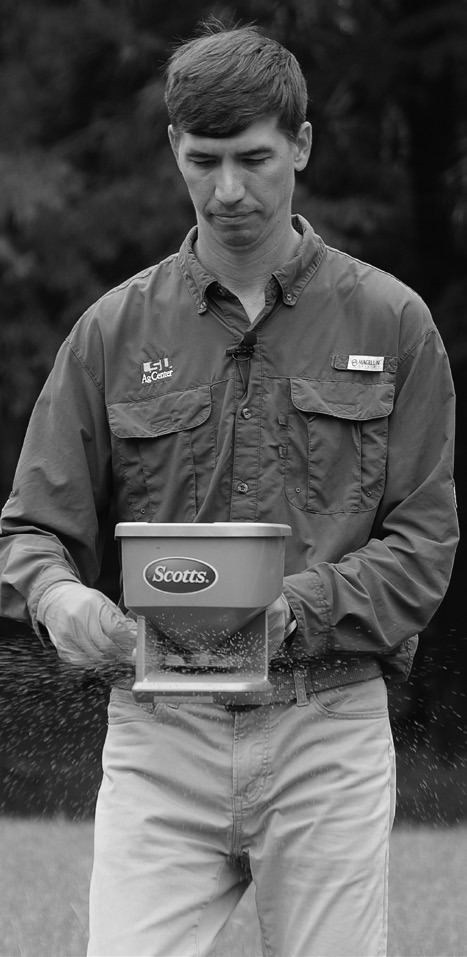Get it growing
It’s finally beginning to cool off here in Louisiana. The air feels just crisp enough in the mornings and evenings to remind us that we’ve officially entered fall.
Lower nighttime temperatures translate to lower soil temperatures — and guess what that means? Cool-season weeds will soon begin growing!
Seeds from last winter’s weed population have been lying dormant in the soil for months. When they sense the soil around them cooling, they know it’s time to germinate and kick off their growing season. This often happens in shady, moist areas first.
Annual bluegrass, henbit and chickweed are some of the most common weeds you’ll start seeing this time of year. Plenty of others thrive in our cool season, including lawn burweed, annual blueeyed grass, bittercress, shepherd’s purse, annual ryegrass and yellow woodsorrel.
To get ahead of these weeds, you can apply a preemergence herbicide to your lawn. These products form a barrier in the soil that prevents seed germination — stopping weeds before they even start growing.
Because of the way preemergence herbicides work, it’s important to get an application out on your lawn before seeds begin germinating. You need to do this soon to get the best results.
Bert Hammett, an LSU AgCenter horticulture agent in East Baton Rouge Parish, offers these tips for applying preemergence herbicides: Buy the right product. Look for a product that lists dithiopyr, prodiamine, simazine or atrazine as the active ingredient. Choose something that is labeled for use on the type of turfgrass you have in your lawn. Do not use atrazine inside the drip line of trees and shrubs. Avoid weed-and-feed products; applying fertilizer right now can reduce winter hardiness of your turfgrass. Be safe. Wear chemical- resistant gloves when working with herbicides and follow all product label directions.
Use a spreader. Most preemergence herbicides come in a granular form. To evenly distribute the product across your lawn, use a walk-behind, broadcast spreader. In smaller spaces, a handheld spreader can work. Calibrate your spreader in a test strip first. Apply the product at the rate specified on the label. Walk from north to south then from east to west to ensure uniform coverage.
Water it in. Most granular, preemergence herbicides must be watered into the soil within 24 to 48 hours or else they won’t work. You can either time your application right before predicted rainfall or irrigate your lawn yourself. Aim for 1/4 to 1/2 inch of water.
Apply twice. For maximum weed control this winter, make an initial application by early October and follow up with a second application between mid-November and early January.
Know your goals. If you want to overseed your lawn with ryegrass
(Olivia
McClure/LSU AgCenter)
for fall and winter color, skip the preemergence herbicide. Remember how we said earlier that these products prevent weeds by stopping seeds from germinating? They’ll do the same to your ryegrass seed.

Jason Stagg, senior landscape manager at the LSU AgCenter Botanic Gardens at LSU AgCenter horticulture agent Bert Hammett demonstrates using a handheld spreader to apply a preemergence herbicide to a lawn.

